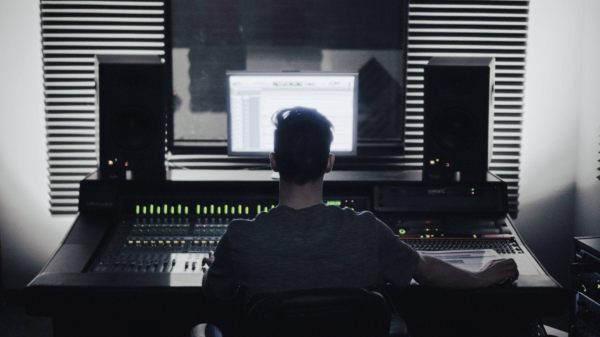When the news of Garth Hudson‘s death hit on Tuesday morning, many thoughts flooded my mind all at once. I thought of the sad reality that all five original members of the Band are no longer among the living, the sorrow that Hudson faced watching his bandmates battle addiction and illness over the past half-century, the pivotal role his organ played in shaping the Band’s sound, and how there are no longer any living participants in The Basement Tapes and Bob Dylan‘s 1966 electric tour with the Hawks — besides Dylan himself.
But I mostly thought about the amazing day I spent with Hudson in 2014 when I accompanied him on a trip back to Big Pink for a Rolling Stone video shoot alongside director Alex Eaton, and Canadian music archivist/producer Jan Haust, who bought The Basement Tapes reels from Hudson and worked with him closely in the final years of his life. After decades of shoddy bootlegs, Dylan was finally releasing Hudson’s complete Basement Tapes recordings as part of a massive Bootleg Series box set. Rolling Stone Senior Writer David Browne was writing a cover story in the magazine about it, and we were making a companion video.
Amazingly, until Browne took him there the prior day, Hudson hadn’t stepped foot on the Big Pink grounds since the Sixties. But the owners weren’t around that day, and he didn’t go inside until our camera was rolling the next day. Hudson was 77 at the time, but he looked at least a decade older with a long white beard that made him resemble a 19th century prospector.
I vividly recall my heart pounding as I stood in the famous Big Pink basement and watched him slowly descend the staircase and soak in a room he hadn’t occupied in nearly five decades. I asked him where they recorded The Basement Tapes and he pointed to a corner. “Where the piano is, that was my work bench,” he said. “It had the tape machines on it. The organ was out on front of it. We had to turn the furnace off to record.”
Editor’s picks
He then pointed out the exact spot where Dylan sat while cuttings songs like “I Shall Be Released,” “You Ain’t Going Nowhere,” and “Tears of Rage.” I asked him to describe a typical day back then. “We’d be around, cleaning up, and doing whatever we did,” he said. “And then Bob would come in and we’d sit for a while and talk about serious stuff, local characters and local wise men, and pretty ladies. And the typewriter would be there and Bob would tap on it for a while, and then somebody would go downstairs and check on the equipment. Then finally everybody would go down the pink stairs.”
We spent hours together at Big Pink that day. Every now and again, fans would drive by and take photos of the house, which still has pink aluminum siding and looks unchanged from the Sixties. One couple even blasted “The Weight” as they stopped for a house selfie, not realizing the Gandalf-looking guy in the background of their shot was one of two surviving members of the Band.
Garth spoke with a very soft voice and I often had to bring my ear near his mouth to fully understand what he was saying. Someone passing by might have assumed he had some form of dementia. But as he walked me through the early days of the Band in minute detail, and even broke down the quick creation of Dylan’s 1974’s LP Planet Waves, it became clear that his brain was fully intact. It was just his body that was breaking down.
As the sun started to set and we began packing up the camera gear, I watched him walk to the end of the drive by himself and take one last look at Big Pink. He leaned down, picked up a rock, and put it into his pocket as keepsake.




























